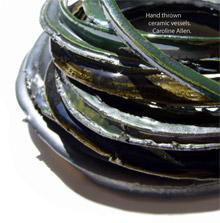Viktoria Kiss, Péter Barkóczy (Institute of Archaeology, Budapest, University of Miskolc, Hungary)
This poster focuses upon the chaîne opératoire and technological backgrounds of local metal production during the Hungarian Middle Bronze Age. Compositional and morphological analyses of metal objects can reveal details of production and technological methods applied by bronzeworkers of western Hungary between 2000 and 1600/1500 BC. Previous studies on metal production of the Transdanubian Encrusted Pottery population have shown that the main raw material of bronze artefacts was Ösenring copper, imported from mining regions of the eastern Alpines or central Slovakia. However, the distribution of specific ornament types clearly suggest local production. Recent analyses of the Zalaszabar hoard carried out by the Tübingen laboratory and the LISA laboratory of Miskolc University have produced new details of the raw material used for these artefacts. Metallographical examinations looking at the microstructure of the object shed light on certain aspects of production technologies. Cold working, hammering and annealing of artefacts following the casting procedure leave detectable marks on the object’s fabric, and reveal technological choices of Bronze Age craftsmen during the production of metal artefacts.


